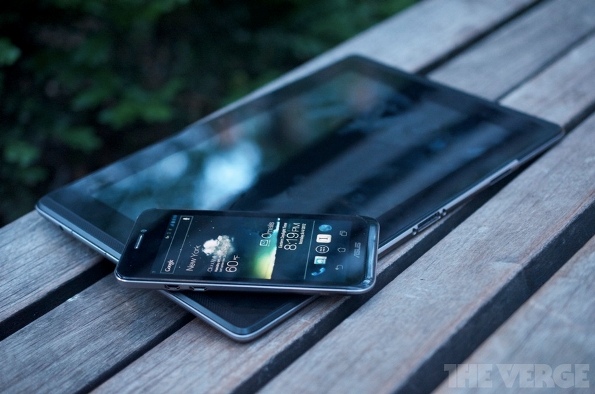When we saw that ASUS had announced the unveiling event of the Padfone 2, our first thoughts were, when exactly did the original Padfone launch?
Honestly, we couldn't come-up with an answer, only that it was supposed to have hit EU shores this June, plagued by stock delays for Qualcomm's Snapdragon S4 SoCs. Though it's possible to buy the Padfone on the net, it's never been available with any of the major retailers and has most certainly slipped under the PR radar, with a few international reviews here and there.
Why then should we be interested/excited with the upcoming announcement of the Padfone 2, which, will take place on October 16th in Milan?

Image Credit: The Verge
For one, Qualcomm seems to have, for the most part, dealt with its production delays. If we look at the original Padfone, though the design felt a little bland it was by no means basic. It was well constructed, small and light, offering-up a modest 4.3in screen for those yet unwilling to super-size, whilst at the same time, packed the same heat as you'd find in the HTC One X (LTE) and Galaxy SIII (LTE).
Android fans would perhaps appreciate that the original device stuck pretty close to the stock release of Android 4.0 and was port friendly, with native microUSB and microHDMI directly on the phone itself. The Camera was bang up-to-date at 8-megapixels though the screen, despite being a Super AMOLED, was limited at a resolution of 960 x 540.
Looking forward to the Padfone 2, many manufacturers chose to modify Android 4.0, adding a little polish to the OS, however, with Android 4.1, there's very little you would want to change; the UI is super smooth by default, with many little tweaks here and there and Google Now offering-up a somewhat more practical approach to services like Siri and S Voice. ASUS can again take a stock version of Android from the repository only this time, it'll have the premium appeal of some of the fine-tuned Android 4.0 distributions found on other high-end devices.
The story is much the same with the hardware; performance-wise, little needs to change, the Snapdragon S4 SoC of the original continues to offer plentiful performance and few manufacturers are blazing ahead with cameras beyond 8-megapixels. ASUS has but a few areas that it needs to focus on and, if it has, there's potential for a very appealing device.
- The Screen
- Needs to go 720p+ HD.
- The Design
- Needs to feel sleeker, less basic.
- The Tablet
- Needs one of the 1080p panels ASUS is now buying in bulk.
- Would benefit from a Wacom or more accurate digitizer pen system.
- Likewise, needs a design refresh.













